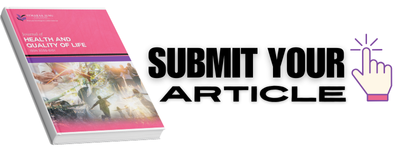Perception and Knowledge of Trunk Rehabilitation in Stroke among Physiotherapy Students: A Cross-Sectional Study
DOI:
https://doi.org/10.37934/jhqol.4.1.110Keywords:
Trunk rehabilitation, perception, knowledge, strokeAbstract
Stroke is an emerging public health issue and associated with substantial healthcare costs. Previous literature has provided strong evidence for supporting trunk training in improving the functional outcomes in the stroke population. Moreover, the patient’s trunk performance has been found to be a valuable prognostic indicator after stroke. This study aimed to identify the perception and knowledge of trunk rehabilitation in stroke among physiotherapy students. This study used a descriptive, cross-sectional design to describe the perception and the level of knowledge targeting Bachelor of Physiotherapy students. A self-developed questionnaire was used and a total of 161 physiotherapy students participated in this study. The questionnaire used was pre-evaluated for validity and tested for reliability in a pilot study. The data were analysed using frequency and percentage analysis. Chi-Square Test and Spearman’s correlation coefficient were used to identify the factors associated with the students’ perception and level of knowledge of trunk rehabilitation in stroke. Almost all (96.9%) of the physiotherapy students perceived that it is important to include trunk training in the rehabilitation programme for stroke patients. However, less than one-fifth (<20%) of the students perceived themselves as having sufficient background knowledge or clinical exposure to manage the trunk impairments in stroke. Overall, the majority (72%) of them were categorised as having poor level of knowledge. The factors associated with their perception included having previous working experience, having a Diploma qualification, and ever attended continuing professional development activity. Whereas the factors associated with their level of knowledge comprised having previous working experience and duration of the clinical posting. Majority of the physiotherapy students were having poor level of knowledge and perceived themselves as unable to effectively manage the trunk impairments in stroke. This urges the need to organise more continuing professional development activities and also to look into the measures to improve the physiotherapy students’ learning experience during clinical posting. These would help them to become a more competent physiotherapist once graduated in delivering rehabilitation services for the stroke population, to optimise the outcomes and reduce the associated economic burden.
Downloads














